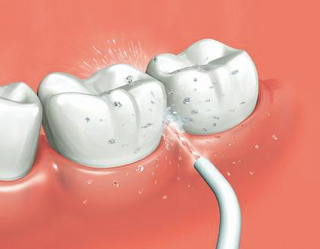Why Flossing Is Important

And The Benefits Of Flossing
People often hate flossing.
And, that’s understandable when you think that it’s a commonly avoided part of our oral hygiene routine, but, if you’re not flossing, there may be big ‘gaps’ in your regimen (excuse the pun).
Many people spend a great deal of time cleaning and whitening their teeth. It is often these very people who studiously avoid the much-maligned art of flossing.
Why? Well, let’s face it, we are human and so it could be that we are already busy enough with all the other routines that we have to squeeze into a microcosm of time before heading off to that thing we call ‘daily life’. And, well, some people don’t exactly enjoy the feeling of “the string” between their teeth and this is also understandable, (especially if they are using string and, believe me, people have tried some interesting ways of cleaning between teeth!).
Oral health professionals the world over have drawn extensive diagrams, given lengthy demonstrations, encouraged and lauded the art of flossing so much so that it has given life to a new dance move popular on the Internet! And yet still it seems to be the last priority in our oral hygiene habits.
So Why Is It Important To Floss?
Well let’s compare it to that dance move, it keeps you and therefore your gums, healthy. Healthy gums are an integral part of our whole-body health.
Flossing removes food debris, bacteria and plaque from between your teeth, a place ordinary brushing often cannot reach. It also gets below that first collar of gum that sits against our teeth and removes bacterial film. Once this debris and bacteria is removed, the gums and teeth are no longer at risk from acid caused by these foreign objects.
So, tackle flossing whenever you can, at least once a day. If you’re in doubt about how to start, remember the dance moves but here’s a few directions for you anyway.
How to floss.
1.Take approximately 45cm to 50cm of floss. You can get waxed or unwaxed floss.
2. Wrap it around your middle fingers and then support it across your thumbs and index fingers.
3. Gently ease the floss between the teeth.
4. As it goes through, sweep the side of one tooth all the way down until just below the collar of gum at the base of the tooth. Bring floss back up and do this again on the other surface of the tooth and down to the collar of the gum.
Work in a methodical way so that you remember to floss between all teeth. If you have any problems speak to your dentist who will show you the correct method, as well as other useful tools that can assist you to floss successfully. Ask us today about flossing!
What Can I Use To Make Flossing Easier?
If you have difficulty with hand held floss, there are many other options for you that will do the job equally effectively.
Hand Held Flossers

These are available at your local pharmacy. They are a small handle with pre-threaded floss already set up for you. Remember to discard after use.
Interproximal Brushes

These can have a long or short handle and have a tiny, slim brush on the end that slides between teeth easily.
Soft Picks

These are narrow rubber brush heads that work by sliding between teeth.
Water Irrigation/Water Pick

This looks like an electric toothbrush and works by water under pressure being pulsed at the gum between the teeth.\
Air Flosser
This uses compressed air to accelerate micro-droplets of water (or mouthwash) between teeth. They are similar to water flossers.
Oh and…avoid using toothpicks. They can break and splinter between your teeth.
Happy Flossing!


